Cassandra Ellis sets the tone
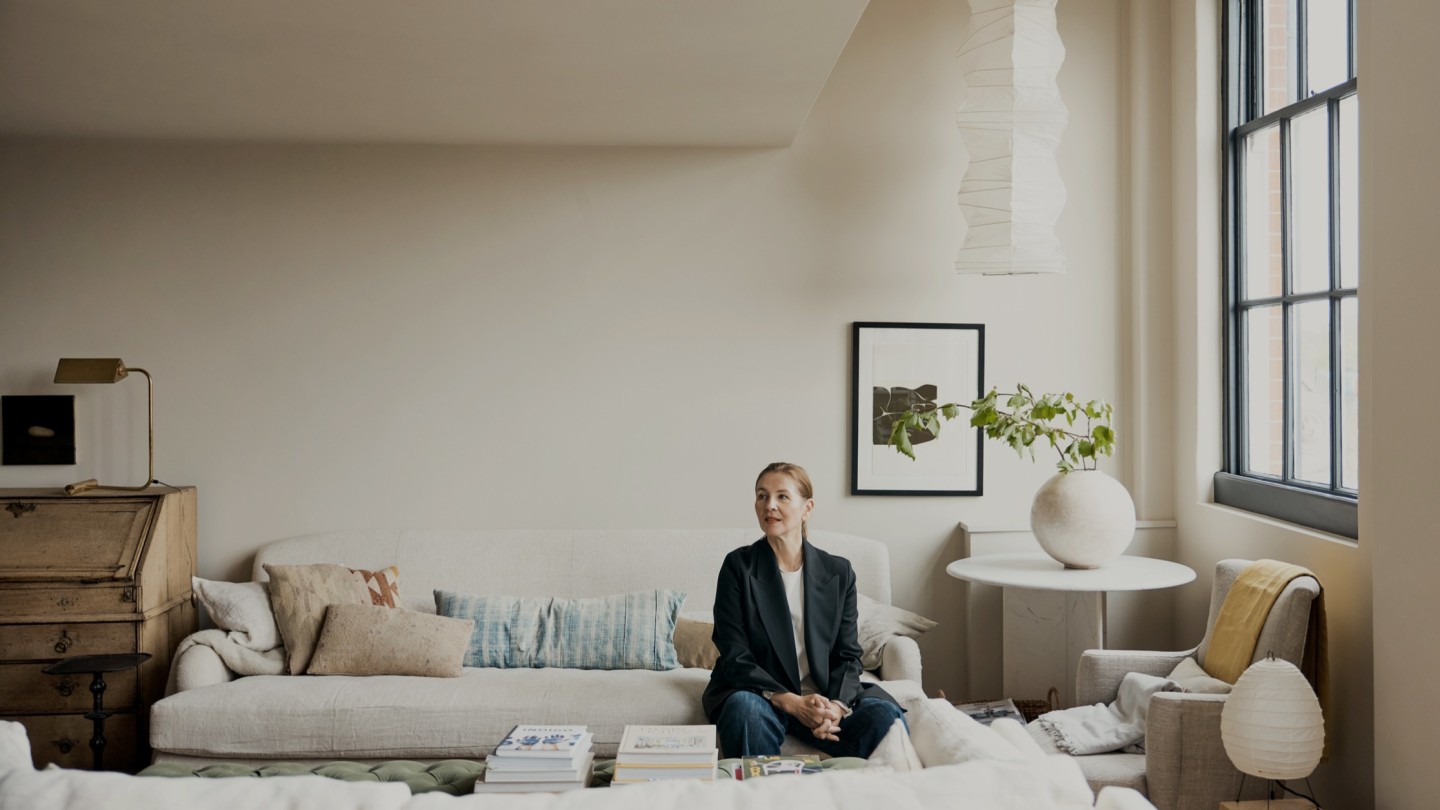
Roula Khalaf, Editor of the FT, selects her favourite stories in this weekly newsletter.
There’s a very particular harmony in the home of Cassandra Ellis. Inside, the atmosphere is of preternatural calm. For anyone familiar with Atelier Ellis, the independent paint company (originally called Ellis Paints) established by the New Zealand-born creative in 2018, this comes as no surprise. Renowned for her sensitivity to colour, Ellis approaches the world of paint with an artist’s eye. In a crowded and often statement-orientated market her aesthetic, embodied in the annual colour collections she conjures and produces by hand at her studio in a former Victorian laundry house in Battersea, is of quiet beauty.
That aesthetic permeates every aspect of Ellis’s life. Not least, the penthouse apartment she shares with her husband Ed Prichard, his daughter Frankie, and their dogs Mr Darcy, a chocolate Labrador, and Australian terrier Otis. This is a place with a visual stillness that reflects their considered but welcoming way of life. Set inside what was once Lavender Hill School, a mixed elementary built in 1891 by T J Bailey, the palatial 2,000sq ft interior in south London is a paean to lateral living. The handsome redbrick site, known as The Village, has been called home by everyone from David Linley to Kelly Hoppen since being converted into studios and flats in the late 1990s. Ellis’s own corner is accessed via the former boys’ entrance, and sits opposite what was once the photo studio of the provocative image-maker Bob Carlos Clarke.
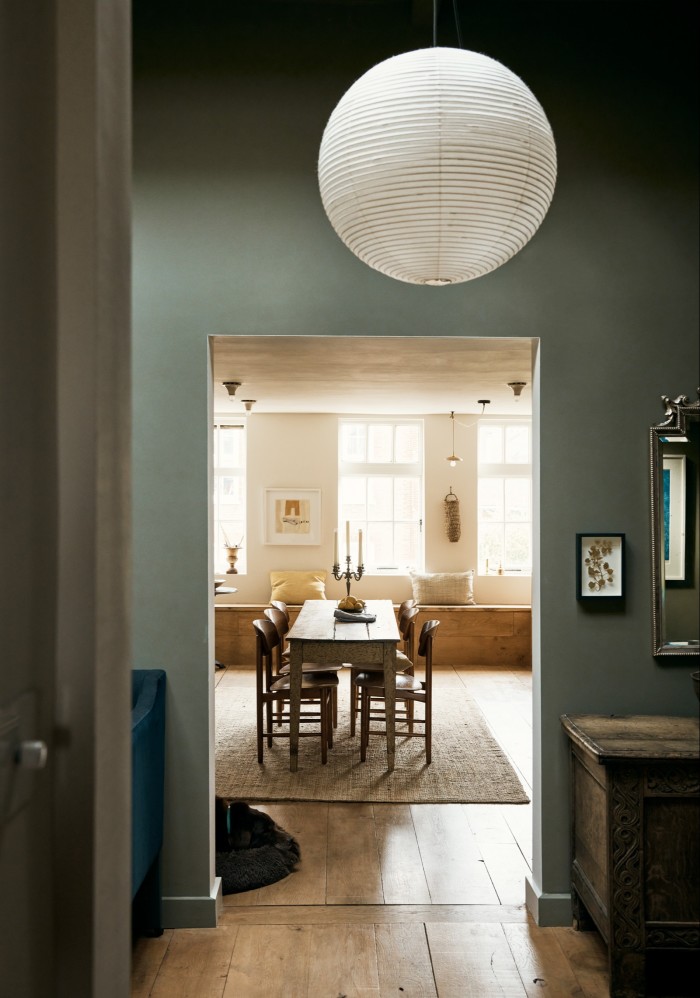
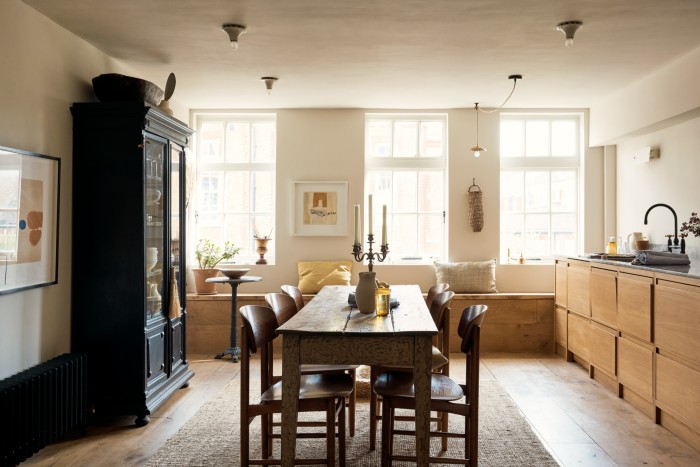
When Ellis first viewed the duplex in 2015, it had been languishing on the market for more than two years. The interior, she says, was a nightmare of florid wallpaper and faux-pine panelling with a domineering kitchen island. Aside from a beautiful Victorian skylight in the hall, all the original features and fireplaces had been stripped out. “It was like being in a really bad, very expensively kitted-out Dorset cottage,” she says. Looking beyond the flashy and outmoded surface, Ellis saw promise in the sense of light in the space. Rather than call on an architect, she worked with a draughtsperson to strip back the interior and start again. “There was nothing that could be saved,” she says. “We must have filled 12 skips.”
Since extending wasn’t an option, Ellis completely redrew the space over a nine-month period, cutting and sculpting it to fit the couple’s needs. “It’s now such a nice, simple and easy place to live,” says Ellis, who’d moved from a classic terrace house in Peckham, which she’s since come to equate with cramped corridors and extraneous bedrooms. Hence, she saw the move as a chance to rebalance and simplify, designing a home without wasted space. The resulting interior has a European, enfilade-style fluidity, with generously proportioned rooms that branch off either side of the central hallway. Light streams in from the living room to the north, which is connected by a long and extensive library of art, design and cookery books, and from the kitchen and dining room to the south.
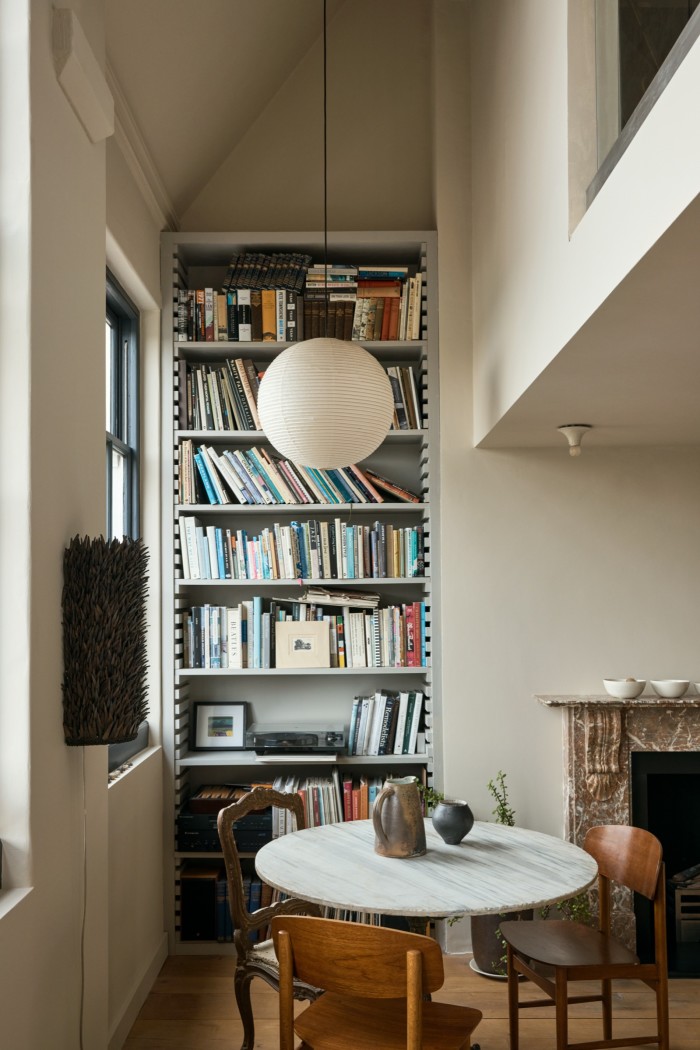
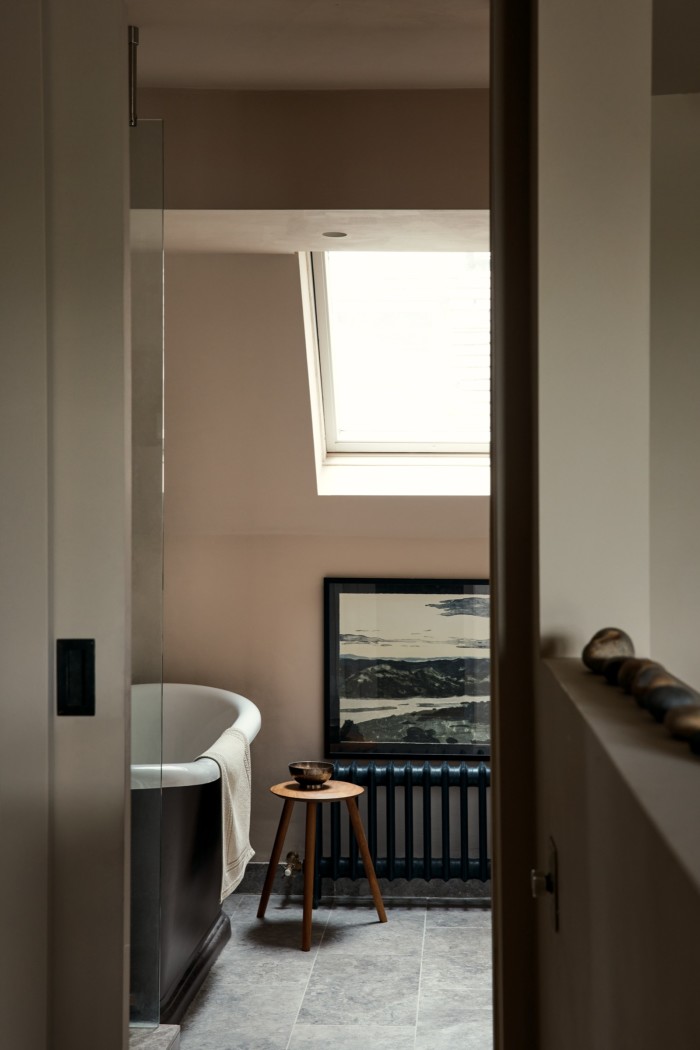
Handily for 21-year-old Frankie, who retreats here whenever she feels inclined, there’s a separate stairwell that leads to her self-contained “mini apartment” with its own bedroom and bathroom. The other ascends to the main bedroom and bathroom, whose mezzanine looks out over London through the epic window that begins in the living room below. “There’s something thrilling about living high up in the city,” says Ellis. On a clear day the view stretches from Chelsea Harbour to the City.
The interior was imagined with the same intuition that Ellis applies when conceiving her paints, and there is a narrative behind the design. “I came up with a story encapsulating how the place should be,” she says, highlighting the focus on cooking and reading, and rooms configured for both contemplation and communality. It’s a method that has proved extraordinarily effective. Whether they’re alone, or hosting a crowd of 30 for a celebratory lunch, as Ellis and Prichard did when they were married last September, it’s a lovely place to be.
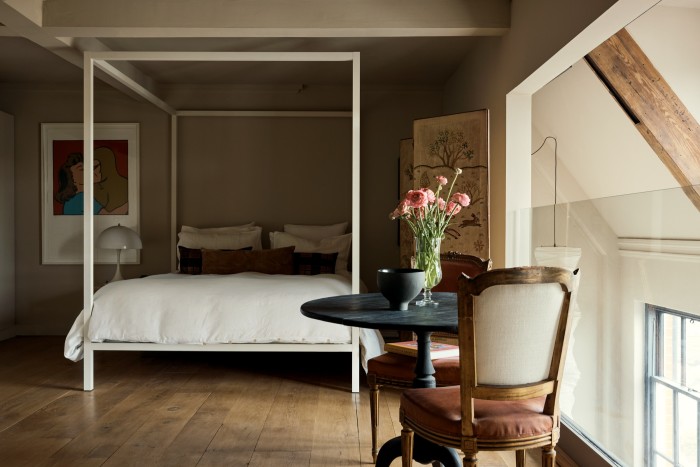
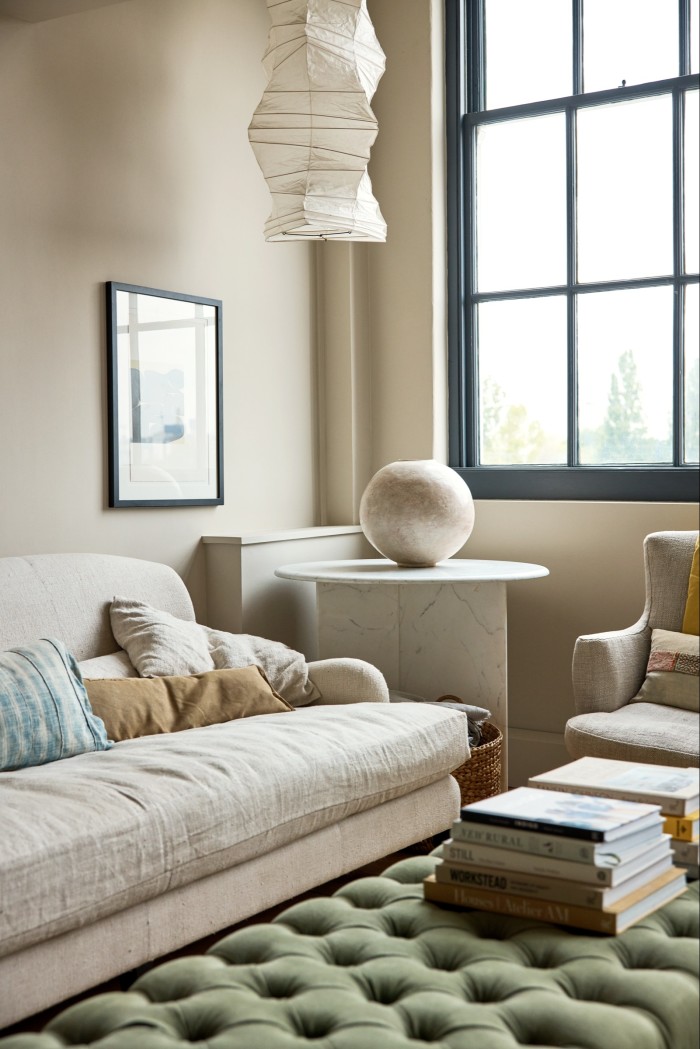
Drawing on a trio of materials – English oak for the floors, pippy oak for the bespoke benches and shelving and silver emperador marble for the surfaces throughout – Ellis has created an elegant but understated sanctuary. “Homes are often very crisp, or overly decorated,” she says. “But this is a very tactile apartment. I wanted it to feel relaxed and quiet, but for there to be lots of things to browse and look at.” There’s an eclectic blend of art and design that spans from the Isamu Noguchi lights that are scattered throughout to Howard Hodgkin canvases to finds from eBay and beach combing. There are lots of personal touches: a bright self-portrait of Prichard’s mother hangs in the stairwell, while in the bedroom an alcove of custom shelving serves as a dedicated shrine to loved ones filled with treasured drawings and ephemera, family photos and mementoes.
Materiality is key to Ellis’s approach. She used brass objects here and there to accent the recently refreshed palette – from a boxed ivy specimen by artist Sophie Coryndon to a leaf-shaped wall light by Italian designer Tommaso Barbi. In the bedroom, an embroidered 1920s screen featuring George and the Dragon sits alongside a wobbly, but wonderful, Georgian table from Jolly Folke that has been scorched to blackness using the ancient Japanese techniques of shou sugi ban. Below, in the long library, is a bench from the Vienna Secession movement, built in the 1890s by the Austrian furniture makers Jacob & Josef Kohn. “Sitting here with a book is such a joyous thing for me,” says Ellis. With its elaborate raised design, the seat, which teeters between art nouveau and modernism, is framed by a wall-hung tapestry picked up long ago in New Zealand. Often called barkcloth, this Pacific Island fabric is made from inner bark, typically from a wild fig or a mulberry tree, that’s decorated with paint or vegetable dye.
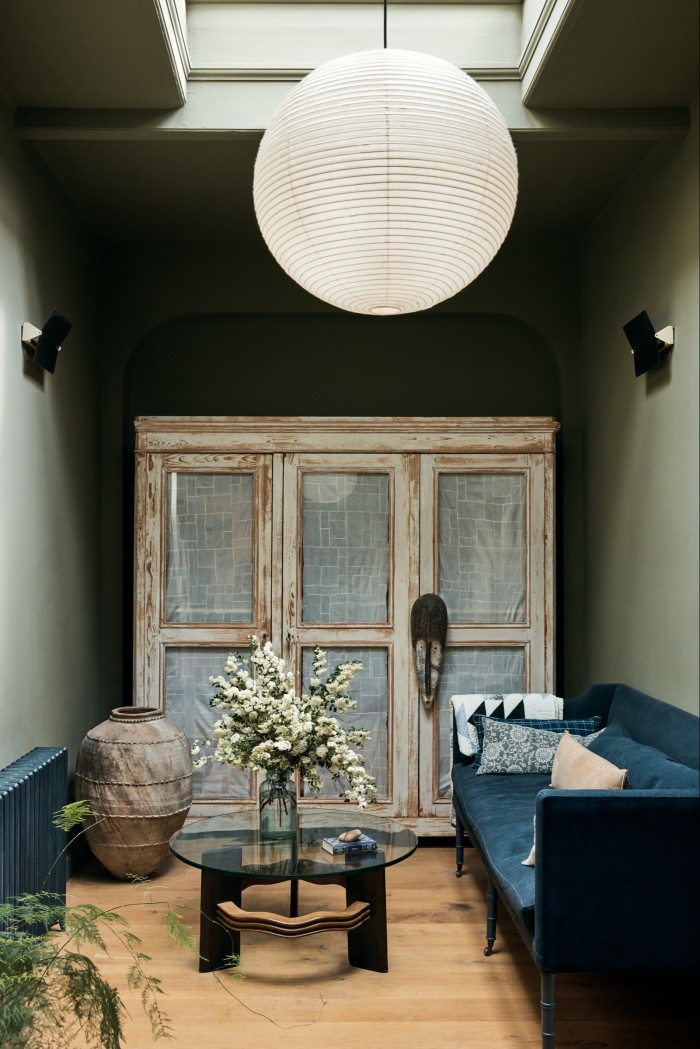
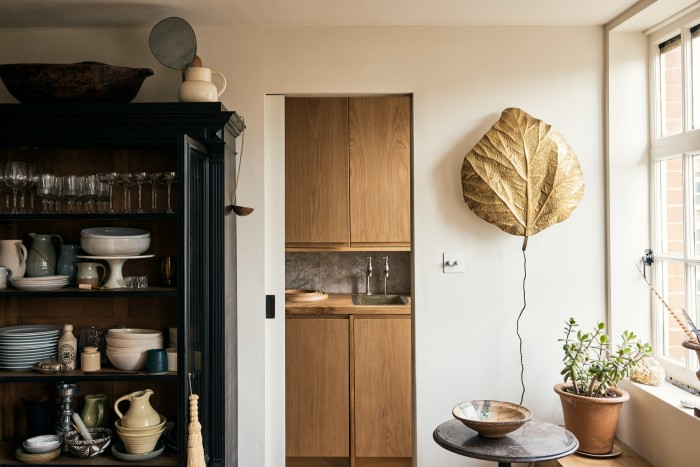
It’s a throwback to one of Ellis’s previous vocations – and a lifelong passion for textiles. From the 1990s she worked in set and event design for television and magazines between London and Auckland before moving to the capital for good in 2008, where she wrote books on quilting and antique textiles and sold bespoke creations. The daughter of an accomplished seamstress, she says: “I’ve always known how to sew and dye and weave. The sound of a sewing machine still sends me to sleep.” Glance around her apartment and you’ll be pushed to find a scrap of cloth that’s new. Beds, sofas and armchairs are strewn with her indigo-dyed patchwork covers and every cushion is clad in faded linen or hemp, some embellished with sumptuous scraps of the fabrics she accrues. She spends spare moments stitching them together to make presents for friends.
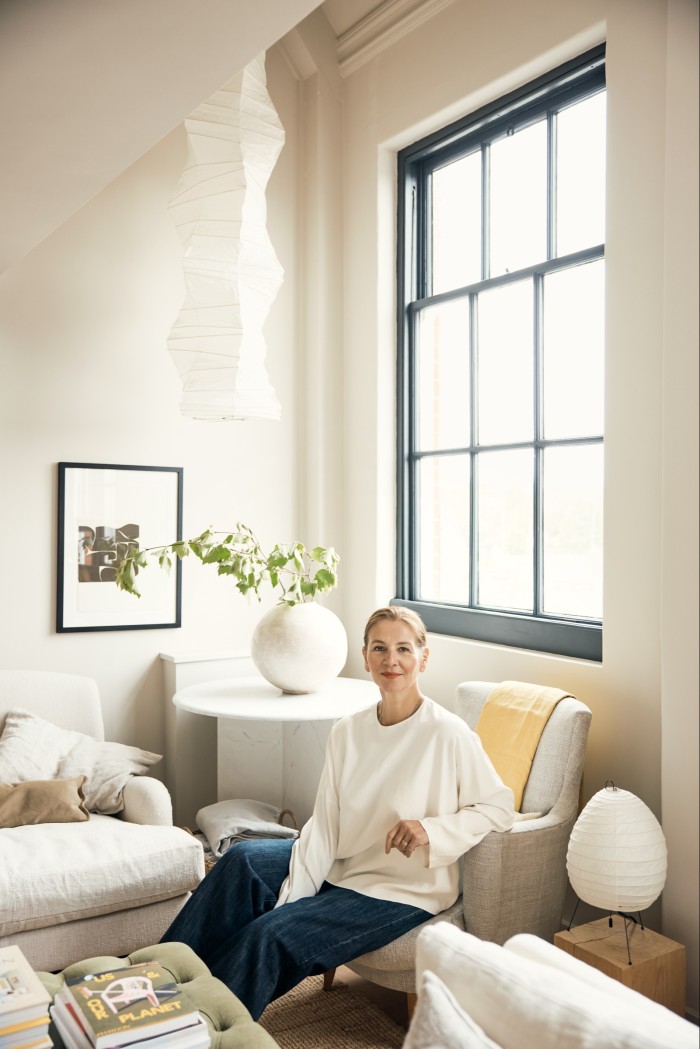
There’s a very definite line to be drawn between the faded patina of these timeworn textiles and Atelier Ellis’s nuanced and earthy paints. “I’ve always wanted to make the colours I saw in my mind’s eye when working with these old fabrics,” she says. Ellis believes that creating colours with a more grounded base, which contain a multitude of pigments that react to changes in the light, makes for happier rooms – and inhabitants. In lieu of bright whites are the soft, deep and warm tones of Khadi, which brings warmth to the kitchen, or the brilliantly bold Aged Black in Frankie’s bedroom. “I’ve always equated colour with place and feeling,” says Ellis, who began mixing paints as child, decorating and redecorating the playhouse created by her grandfather in the garden of her home in Papakura, a suburb in southern Auckland, with her own colour concoctions.
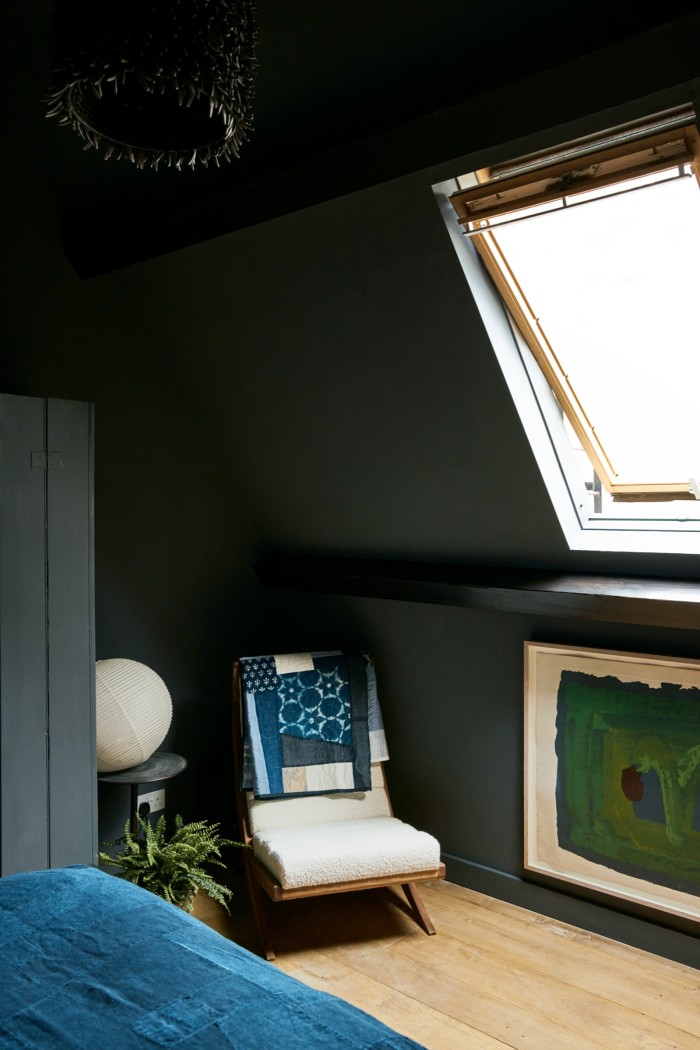
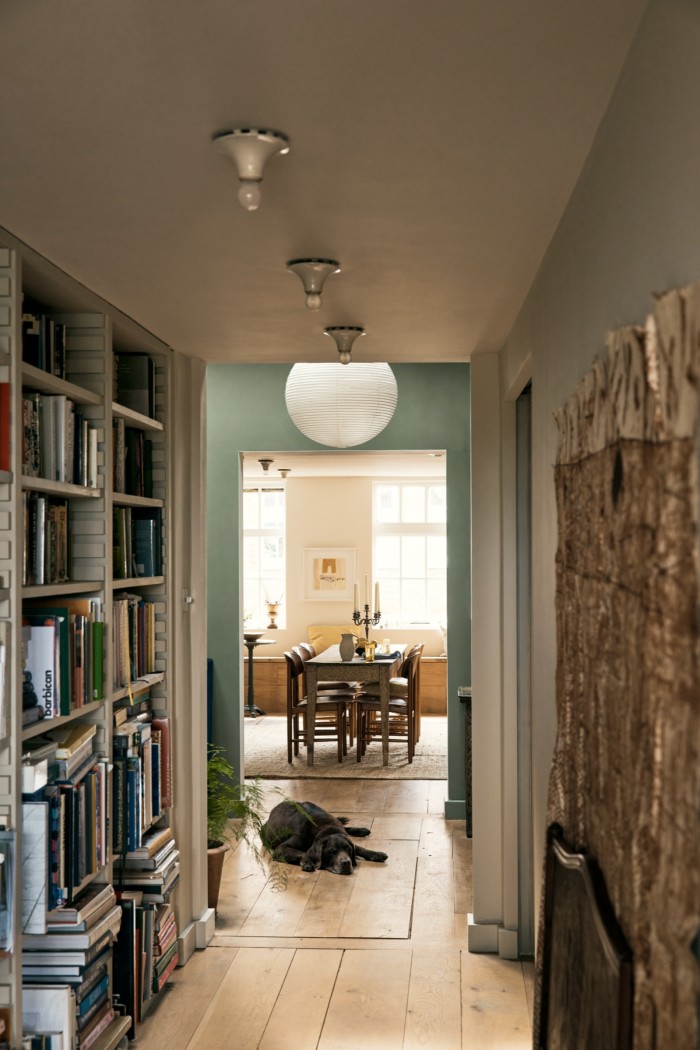
Every one of the couple’s homes – they have converted and sold seven properties since meeting in 2007 – has served as a canvas for Atelier Ellis. Rather than adhering to design dictates, be they Bloomsbury or brutalism, Ellis believes the power of colour is about divining what is right for the place and the person. She works with architects, designers and creatives, including Mayfair emporium The New Craftsmen and the furniture designer Fred Rigby, often creating bespoke palettes for entire projects that can start with a single brief – one architect has asked for an entire home in Turneresque watercolours.
Ellis is completing her latest collection, released this September, which is a celebration of eclecticism and human idiosyncrasy within interiors, borrowing from the works of everyone from Rita Angus to Amrita Sher-Gil. In an age of visual bombardment, says Ellis, people can get stuck when it comes to painting their homes. There’s a danger of mindlessly following trends. Ellis encourages customers to reflect on what they really like and need. “We all have personal associations with colour. It’s about giving yourself permission to choose,” she says. If tones can tell stories, the key to finding yours is not on Instagram, but within.
Comments